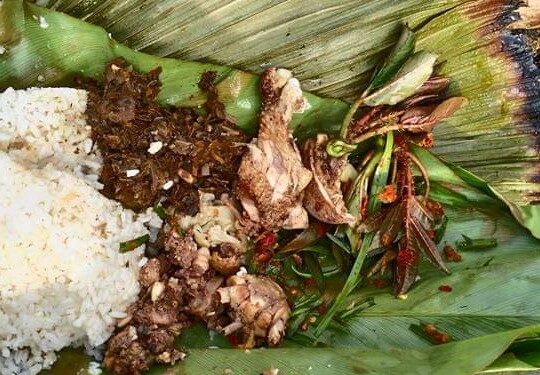Hakhu-Phak is an important festival of the Tutsas. It marks the beginning of a new agricultural season or year. it is celebrated before clearing the newly identified jhoom plot for cultivation. To fix up the date of this festival, a meeting of the village council is held in the Paang (dormitory). The members of the council headed by Lungwang (chief) include Songwang (clan leaders), pangmi (youth), Ngongwa (Deputy Chief), village priest etc,. The village council performs a ritual called Waphok to find out auspicious moment and date for the celebration of Hakhuk Phak and clearing of the jungle from the jhoom fields. The bursting and splitting of the bamboo put on fire while performing the waphok ritual indicates an auspicious date and time of the Hakhu-Phak festival and the prospects of the next crop season is also predicted on this ocassion.
On the appointed day, the jupwa (expert and representative of the village chieftain) is sent to the newly identified plot of jhoom field along with Chasa Wong (rice), Leru Lak (leaves of Ku Pat) and Semui Khamsa (pure rice beer). The Jupwa after reaching the place earmarked by th village council offers prayers and performs a ritual worship for seeking permission from the supreme being Lord Rang-Kho Thak-Rang, other Gods and Goddesses, spirits, living beings, animals, trees etc. to allow the villagers to cultivate the land selected by them. While offerings prayers, he (Jupwa) erects a pole called Sara Tam by splitting in top. Rice placed in Leru Lak leaves is placed on the top of Sara Tam and incantation are recited by him to please the divinities and spirits for a successful crop season.
After reciting these incantations, the Jupwa offers rice beer to all the deities and spirits by spraying it on the Sara Tam and returns back. On the third day, the general public would perform Hakho-Phak ritual in their respective jhoom field allotted to the individual cultivators. In the early hours, they would go to their plot along with rice, rice beer, and Leru Lak leaves. Above stated rituals is performed and incantations are recited at individual level by all jhoom cultivators. Sumptuous meal is prepared on the farm and consumed by the family members. Subsequently, the female members return back to home.
A village level community level contributory feast is arranged in the evening at an appointed place in which only male members participate. The place of this grand party or feast Longdung-Saram is decided by shouting loudly, crying and exchange of dialogues by the elders of the village. Animals are sacrificed and their meats are offer to young boys whereas head is offered to the elderly village community members. The chest portion is kept for the girls and the legs of the animals are for the children. After this feast, the head of each household performs a ritual called Talak. The leaf of broom are used for Talak and its leaf are splitted and examine to know the prospect of the next crop season. Thus, one can predict that what would be the crop yield or success or failure of the crop season. After the performing of the Talak ritual, the villagers return back to their respective home while firing gunshots in the air, shouting and rejoicing on the onset of the next crop season
